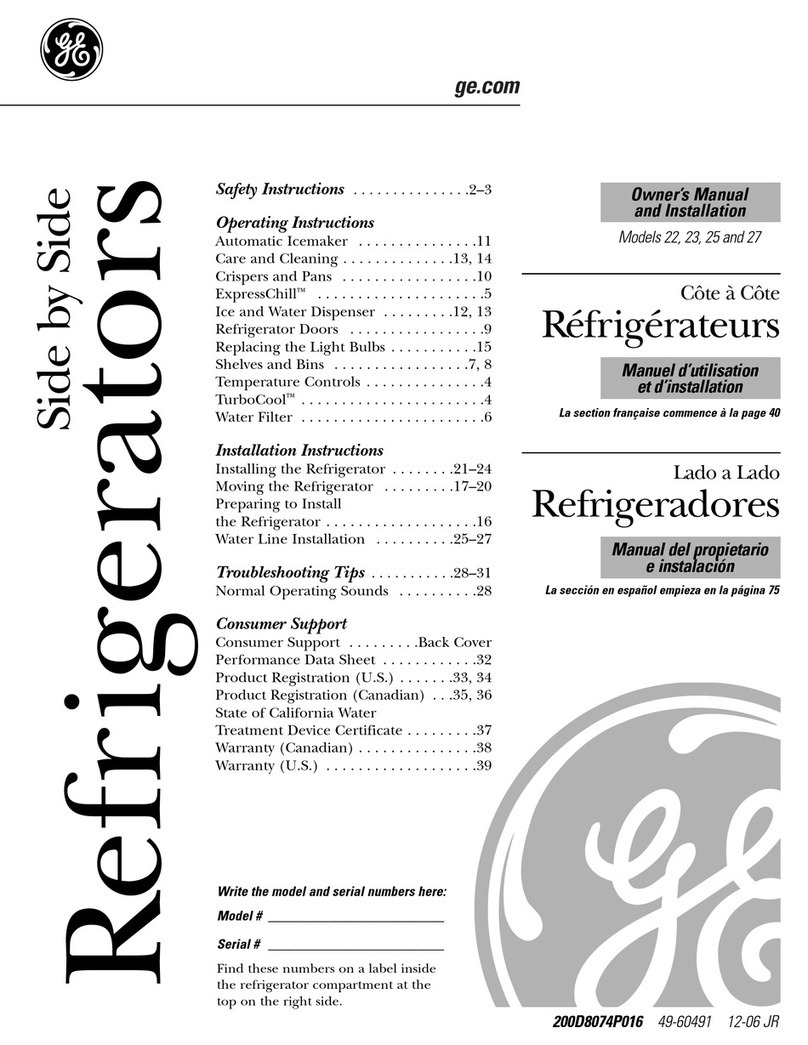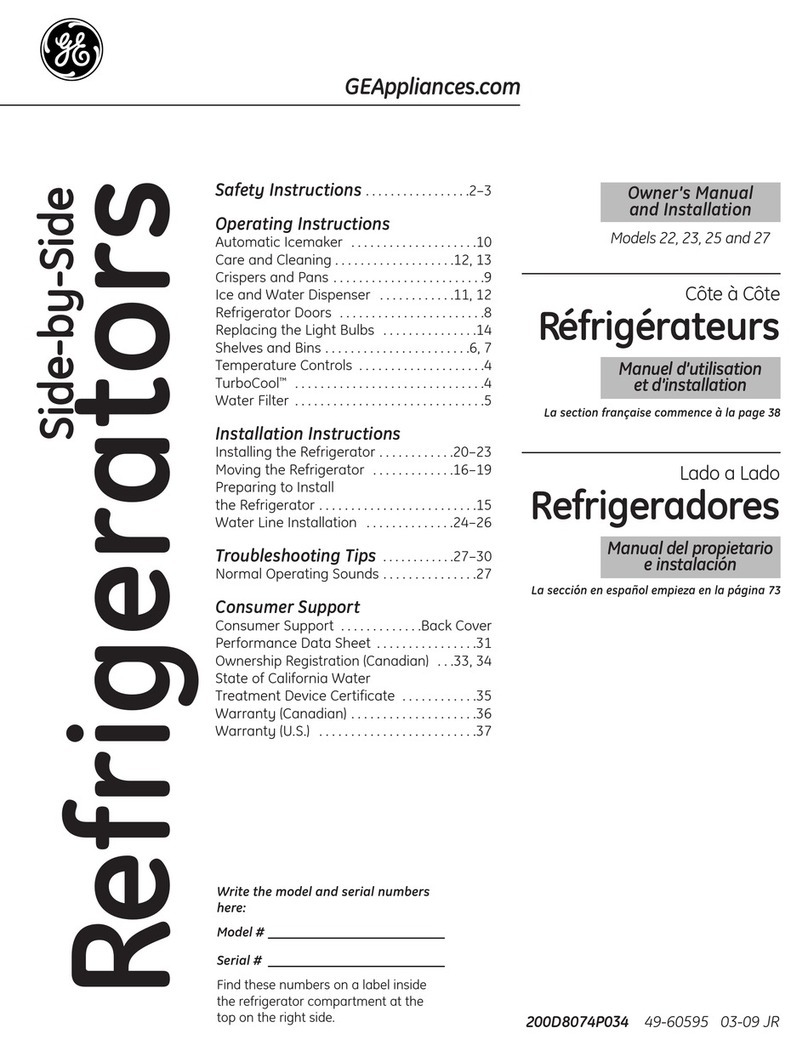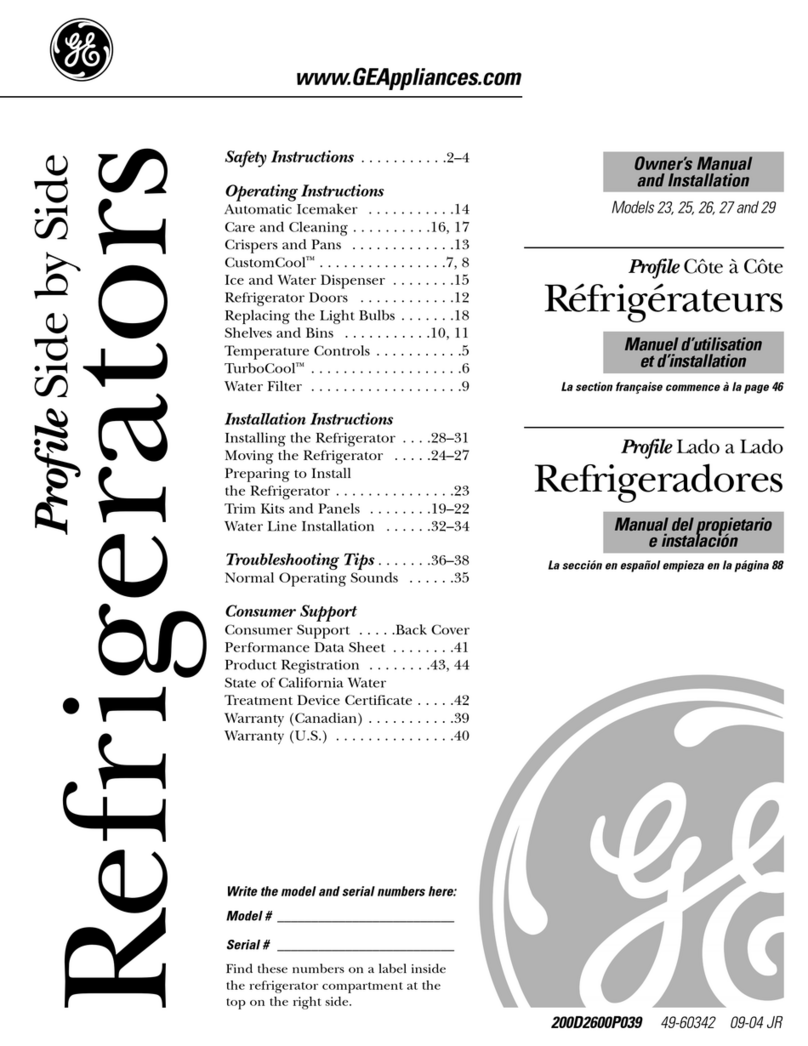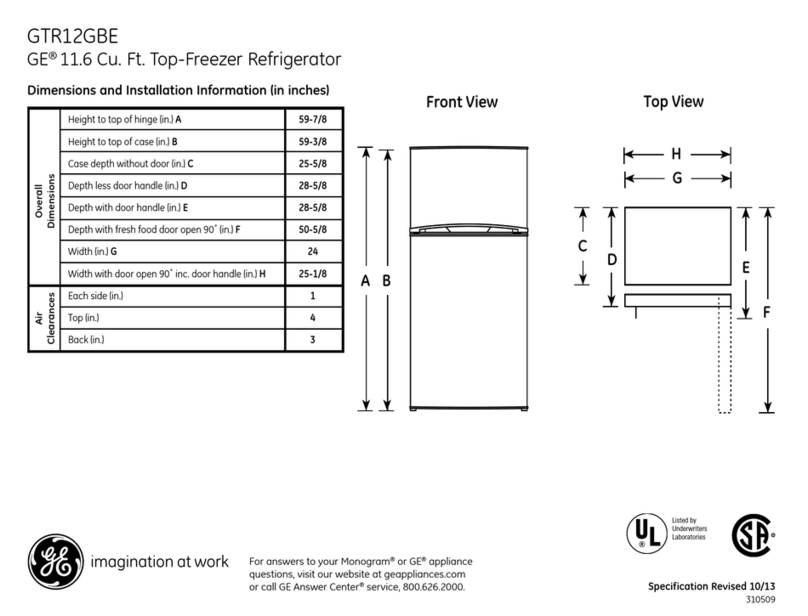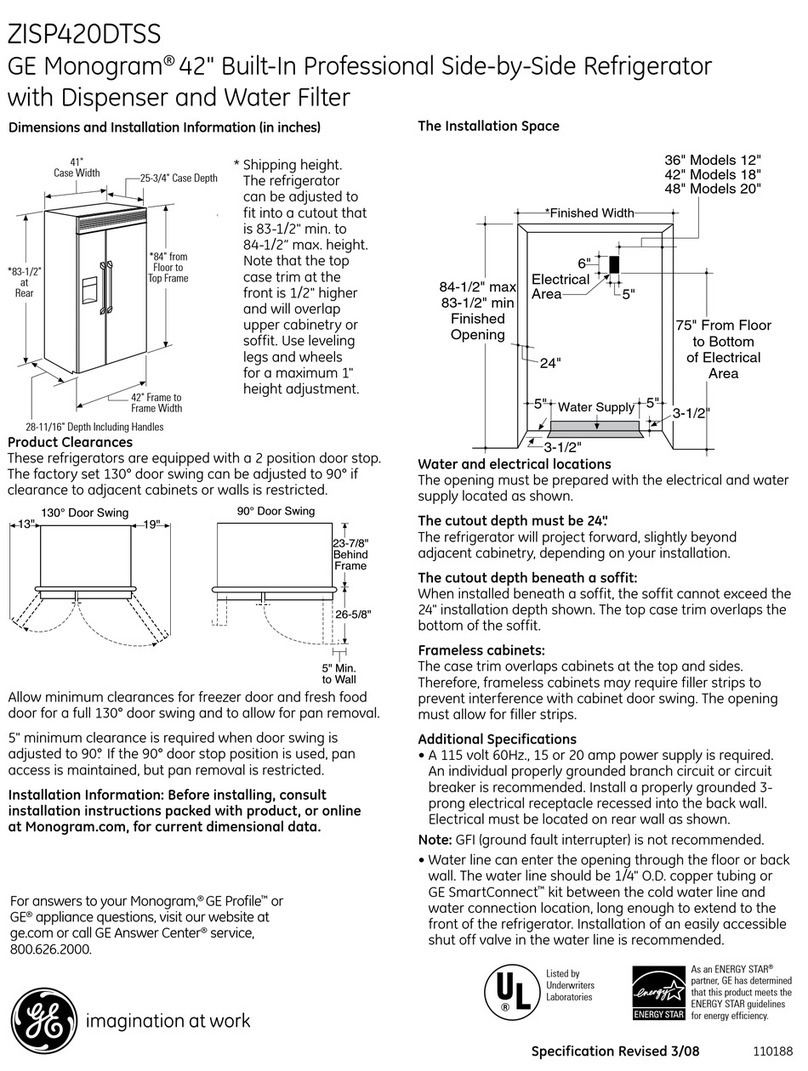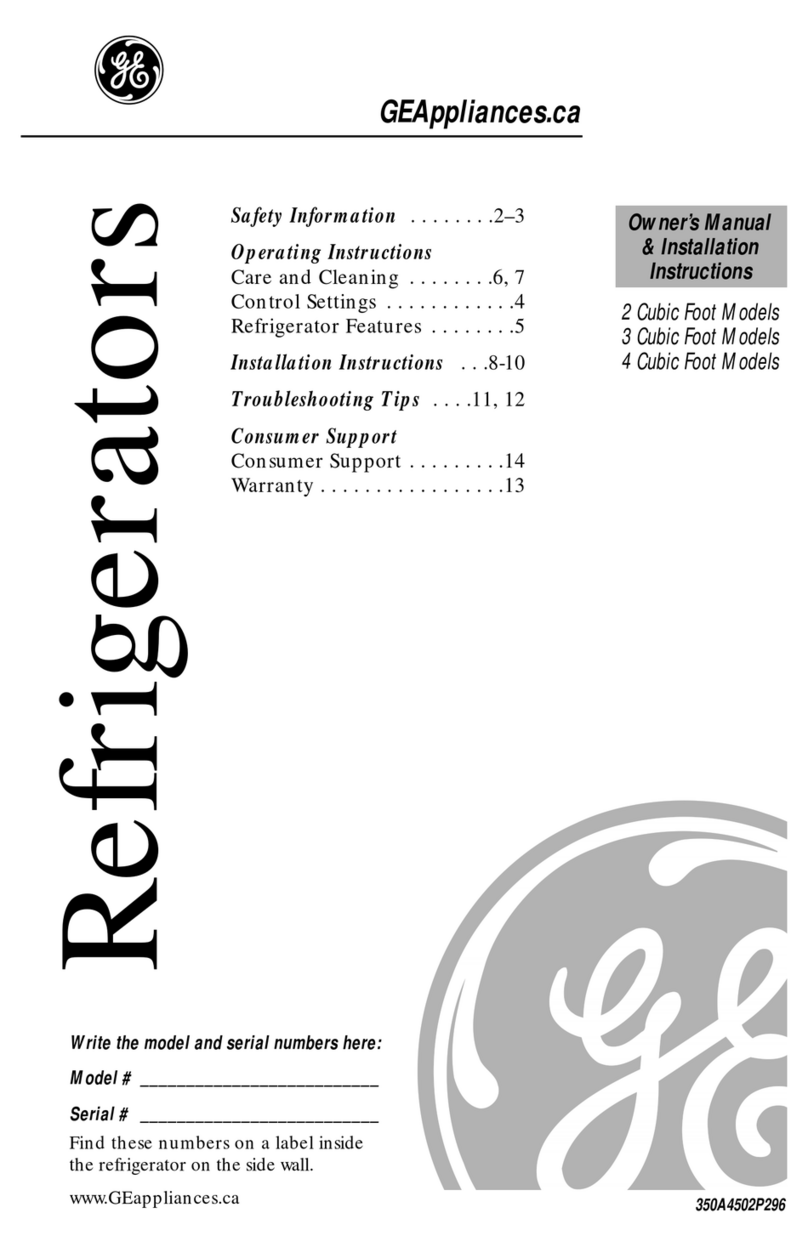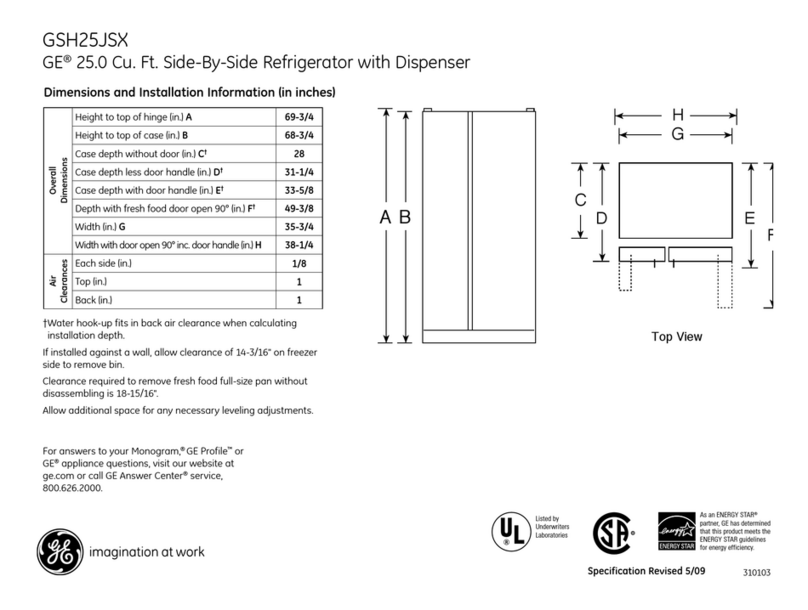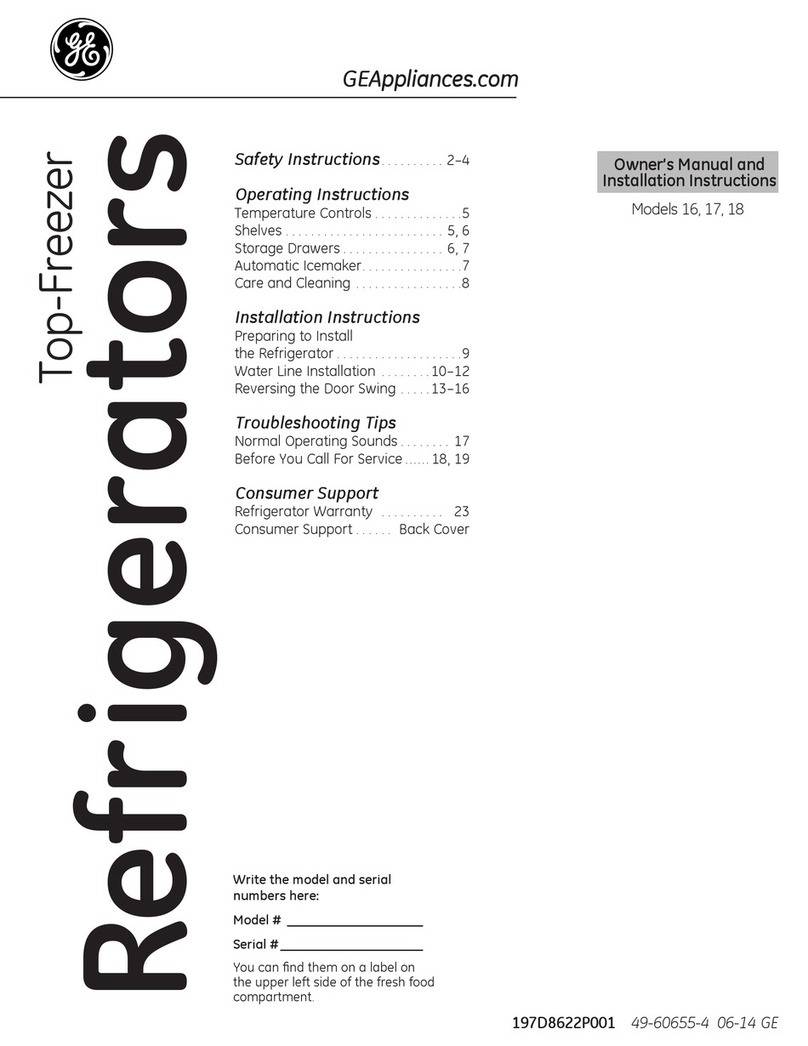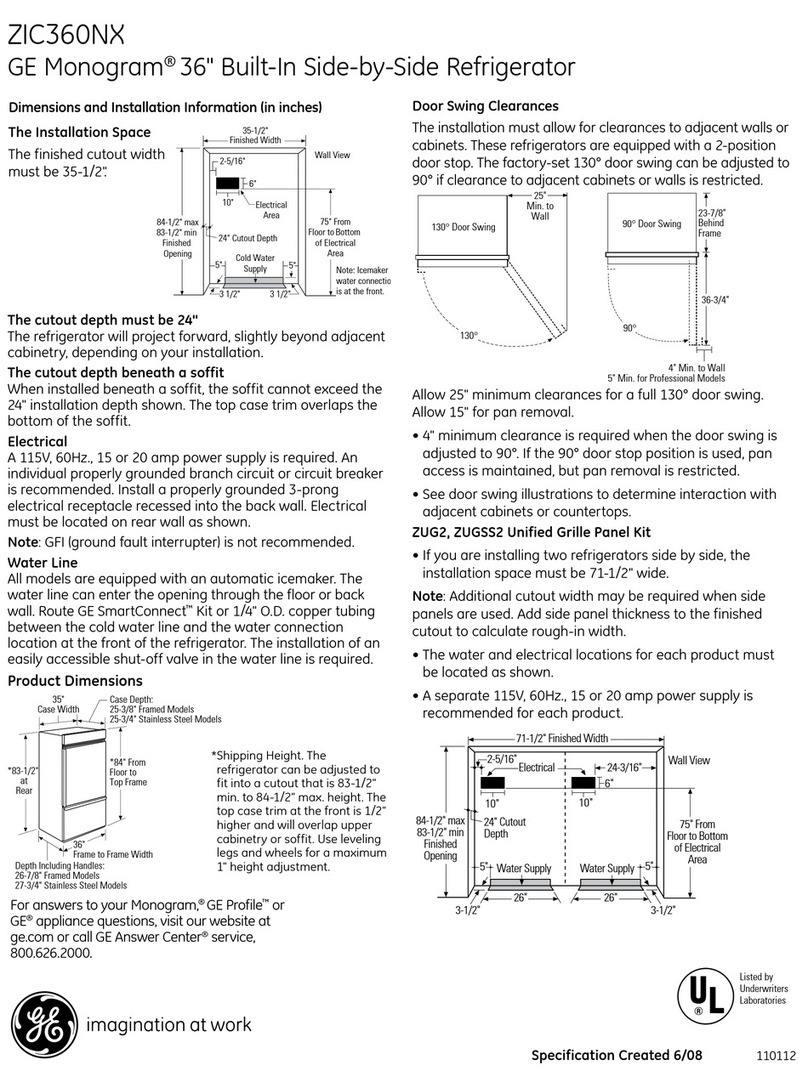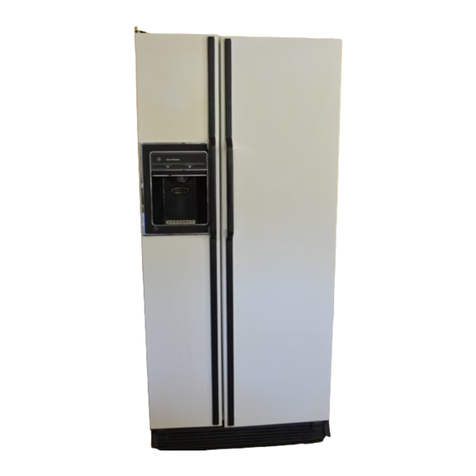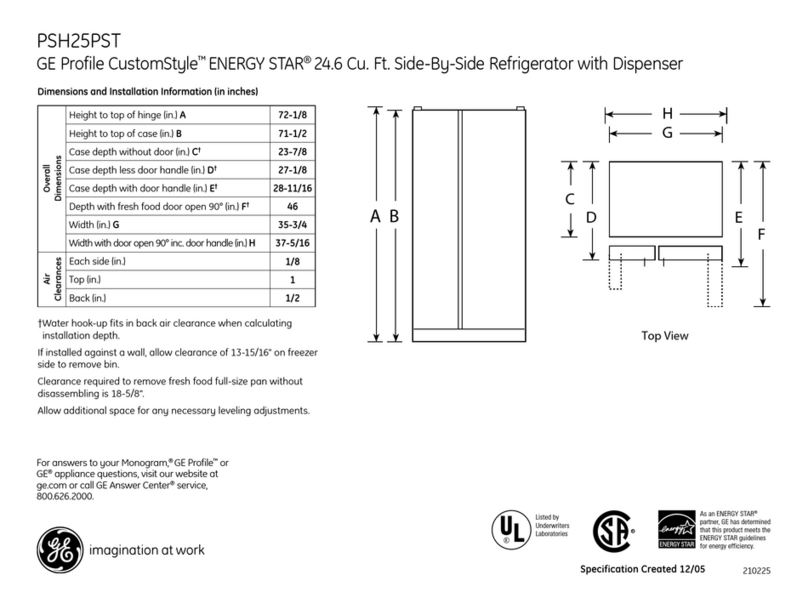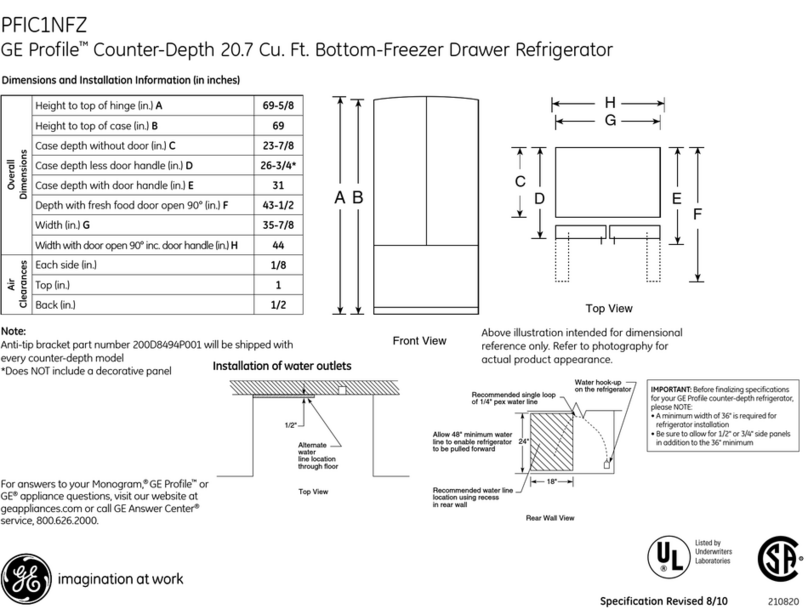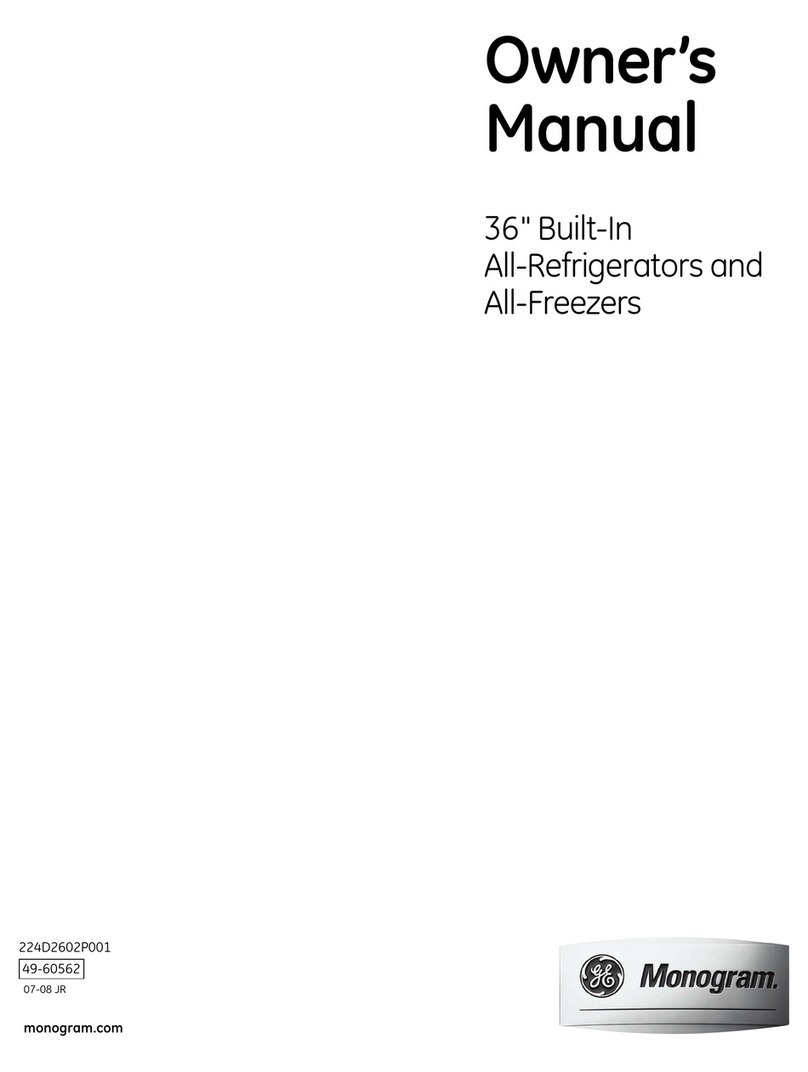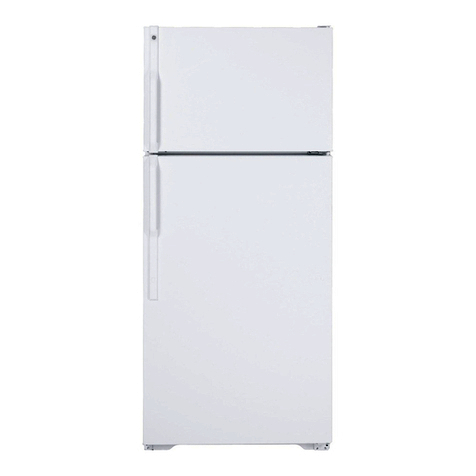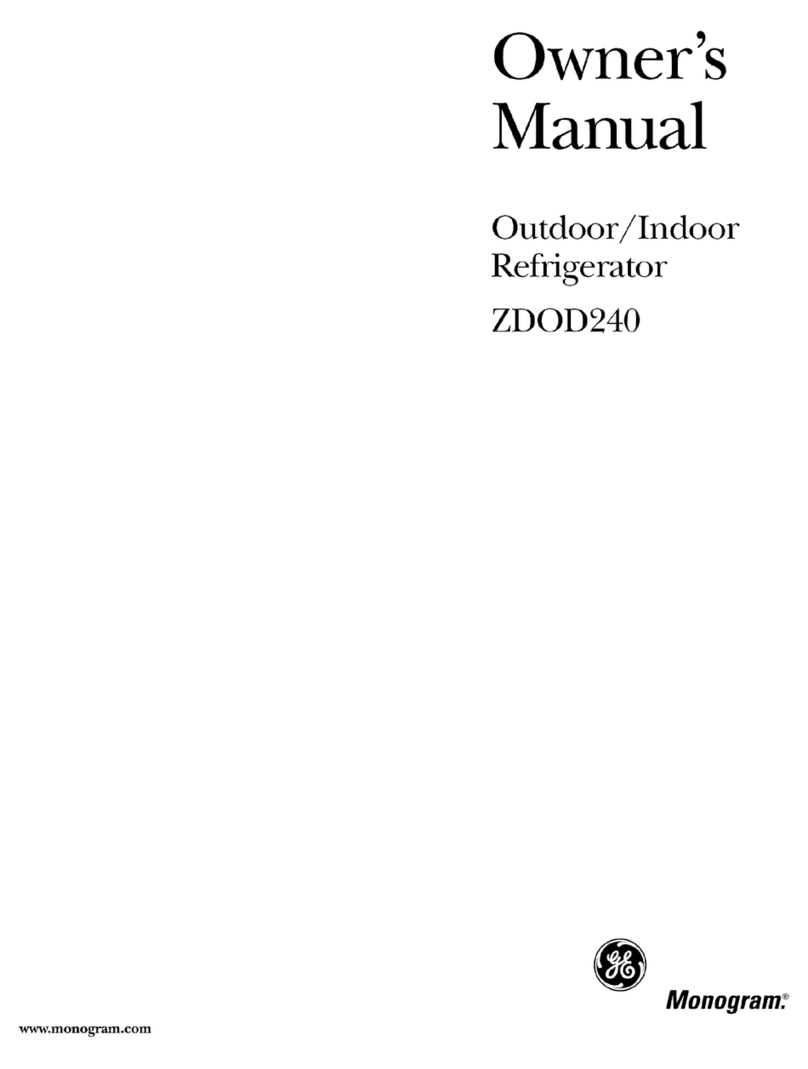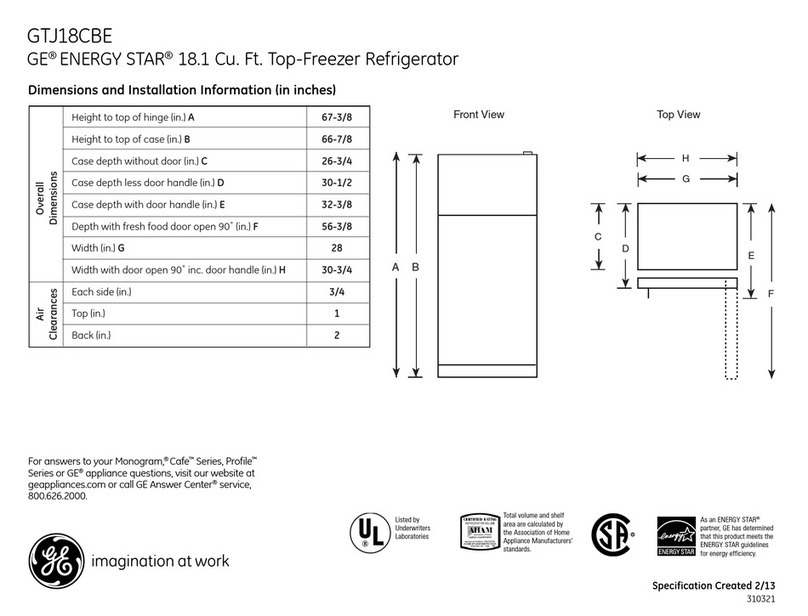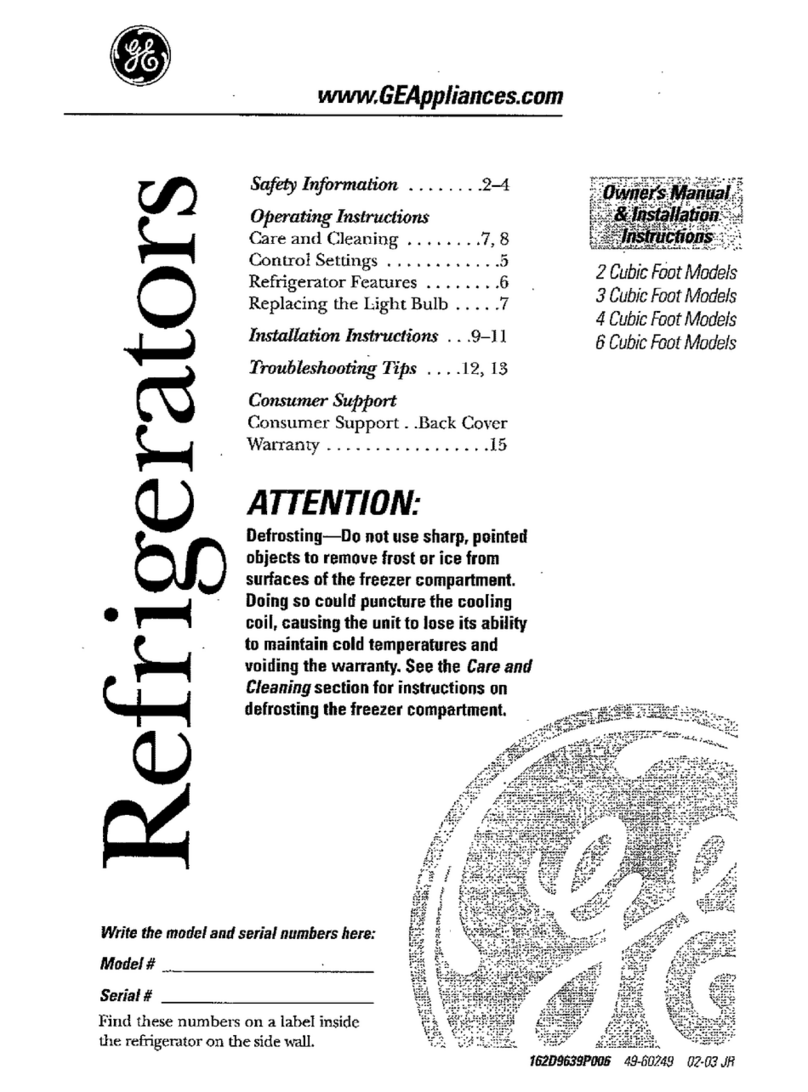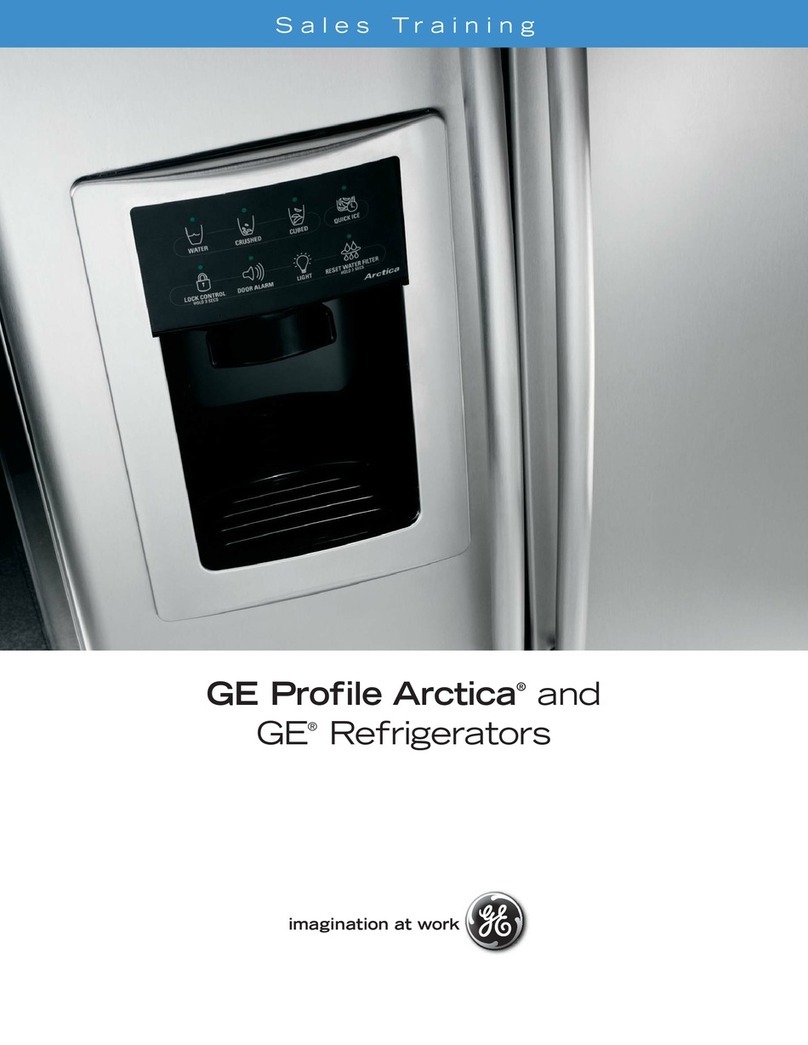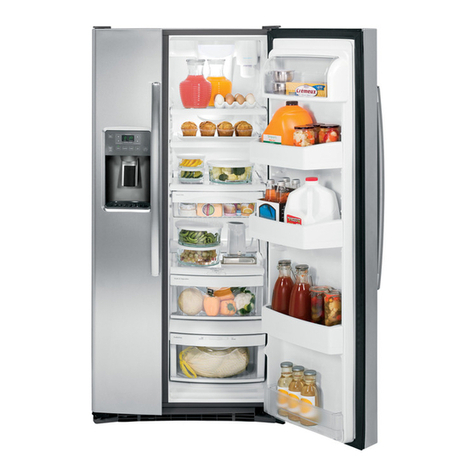
5
CARE AND CLEANING
Cleaning—Inside
Unplug the refrigerator and remove food, shelves and
trays. Wash inside with warm water and baking soda
solution—about two tablespoons of baking soda to a
quart of water. Then rinse and dry.
Don’t use cleansers such as soaps, detergents,
scouring powder or spray cleaners—they may cause
odors inside the refrigerator.
Wash ice cube trays, drip tray and shelves in mild
detergent solution and dry with a soft cloth.
To help prevent odors, leave an open box of baking
soda in the rear of the refrigerator, on the shelf.
Change the box every three months.
Wipe outside of refrigerator with a soft cloth
dampened with soapy water or Appliance Polish Wax
Cleaner (Cat. No. WR97X216), available from GE
Appliance Parts Marts. Use only mild, soapy water to
clean the door gasket.
Never use acids, chemical thinner, gasoline, benzine
or the like for cleaning any part of the refrigerator.
Boiling water or benzine may deform or damage
plastic parts.
Do not wash any plastic parts from your
refrigerator in your automatic dishwasher.
PREPARATION
Refrigerator
The refrigerator must be installed
on a floor strong enough to support
it when it is fully loaded.
If the refrigerator is in a 40°F. or
colder room, it will operate but it
will not cool foods properly.
Also see Energy-Saving Tips.
Clearances
Allow the following clearances for
ease of installation, door opening
and proper air circulation:
• Top of refrigerator to
underside of countertop.........11⁄2″
• Above flooring
(including carpeting).............11⁄8″
• Hinge side, if refrigerator
is next to a wall .....................11⁄4″
Leveling Legs
Adjustable legs at the front corners
should be set so the refrigerator is
firmly positioned on the floor. Legs
should extend 11⁄8″down from
bottom of cabinet; the front of the
refrigerator may need to be raised a
bit more so the door closes easily
when opened about halfway.
Turn leveling legs counterclockwise
to raise refrigerator, clockwise to
lower it.
Disconnect the power cord from wall outlet,
remove food and defrost refrigerator. Then clean and
dry the interior.
Secure all loose items such as ice trays and drip tray
by taping them securely in place to prevent damage.
Be sure refrigerator stays in upright position
during actual moving and in van. Refrigerator must be
secured in van to prevent movement. Protect outside
of refrigerator with blanket.
Preparing to Move
Preparing for Vacation
For extended vacations or absences, unplug the
refrigerator. Clean the interior with baking soda
solution of one tablespoon of soda to one quart of
water. Wipe dry. To prevent odors, leave an open box
of baking soda in refrigerator. Leave doors open.
For shorter vacations, remove perishable foods and
leave the control at regular setting. However, if room
temperature is expected to drop below 40°F. follow
the same instructions as for extended vacations.
Operating Care and Cleaning Preparation
